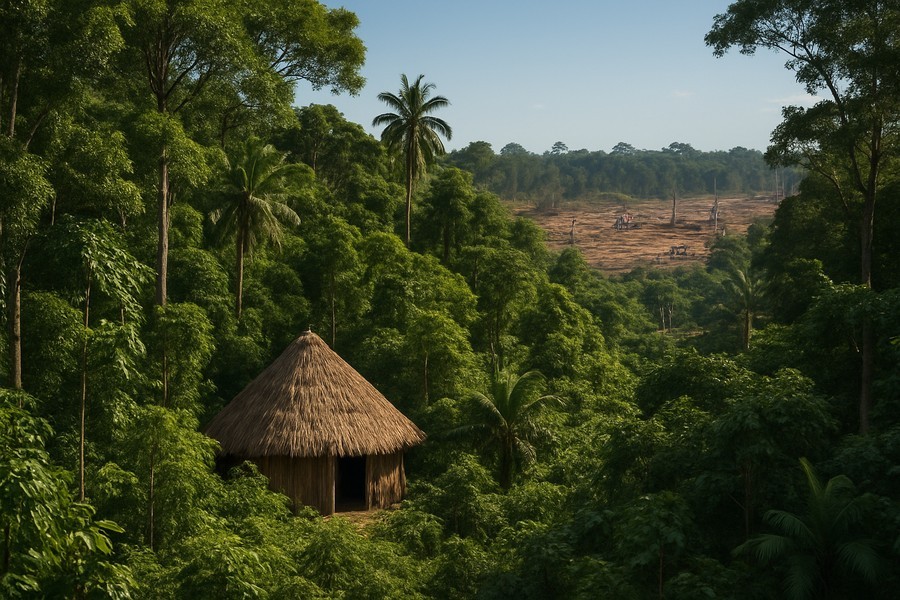
Uncontacted Communities in South America: A Fight for Survival and the Future of the Amazon
Recent investigations have highlighted the threat to nearly 200 uncontacted Indigenous communities across 10 countries in South America, Asia, and the Pacific. These communities, with a population in the tens of thousands, are at risk of extinction within the next ten years. This is primarily due to industrial activities, criminal entities, and unwelcome missionary invasions. Logging, mining, and agribusiness are the leading causes of their imminent danger.
The research also suggests that even indirect contact, such as diseases transmitted by outsiders, could lead to the decimation of these communities. The climate crisis and illegal activities only add to the peril facing these isolated peoples.
Isolated Indigenous Peoples in the Amazon Basin
More than 60 confirmed and dozens more reported isolated Indigenous communities reside in the Amazon basin. The majority of these groups, around 90%, are found in Brazil and Peru. As the threat to their survival grows, so too does the danger facing the Amazon rainforest, their home and one of the world's best defenses against climate change.
Brazil, in particular, has policies in place to protect these isolated communities. These policies, adopted in 1987, require the demarcation of these communities' territories and mandate that all contact should be avoided unless initiated by the Indigenous people themselves. This approach has led to an increase in the reported and confirmed number of different Indigenous groups and aided in population growth.
Challenges and Threats to Indigenous Rights in Brazil
Despite these protective measures, the National Foundation for Indigenous Peoples, the agency responsible for safeguarding these communities, has seen its authority and resources severely diminished in recent years. This lack of support and authority has left the agency unable to effectively carry out its mission.
Adding to the complications, the "time limit" law passed in 2023 recognizes only Indigenous territories occupied by aboriginal peoples on the day Brazil's constitution was enacted, which has caused disputes over territories like the Pardo River Kawahiva. This area is home to an isolated community that was officially recognized by the Brazilian government after the time limit cutoff.
Of Brazil's 114 reported isolated groups, only 28 have been officially confirmed. Many of these groups, both confirmed and under investigation, live in areas that have yet to be demarcated. If the time limit law continues to hold, these areas could be at risk.
Peruvian Indigenous Peoples Under Threat
In Peru, misinformation about the existence of isolated peoples has been propagated by groups with financial interests in the rainforests. However, these Indigenous communities do exist, and the Peruvian government has officially recognized 25 separate groups. Indigenous organizations believe there may be an additional 10 groups. Denying their existence effectively amounts to an extermination campaign.
Proposed laws in Peru pose a serious threat to the existence of these Indigenous communities. One such law would give congress the power to eliminate existing lands for isolated peoples and make it nearly impossible to create new ones. Another law would permit oil and gas extraction in all of Peru's natural protected areas, including national parks. This poses an extreme risk to the survival of the Indigenous communities that call these areas home.
The Fight for Survival Continues
These isolated communities face threats even without these proposed legal changes. In a recent incident, a proposal for a 1.2 million-hectare Indigenous reserve, Yavari Mirim, was rejected, despite the Peruvian government having officially recognized the existence of the isolated Indigenous peoples of Yavari Mirim. This rejection occurred in spite of substantial evidence supporting the demarcation of their traditional territories.
As the host of a global climate conference, Brazil is calling on nations around the world to take decisive action on climate change. Both Brazil and Peru accept significant amounts of funding to combat the climate crisis and deforestation. However, these governments also permit the destruction of forests that hold significant amounts of carbon, rich biodiversity, and are home to the world's most vulnerable populations.
Indigenous communities have continually resisted this hypocrisy, as these forests are their lifeline. Despite numerous losses, they remain committed to the fight for their survival and their lands. They urge the Brazilian and Peruvian governments to uphold their constitutional, legal, and moral obligations, and join them in defending Indigenous territories and the isolated communities whose only wish is to continue living freely.
